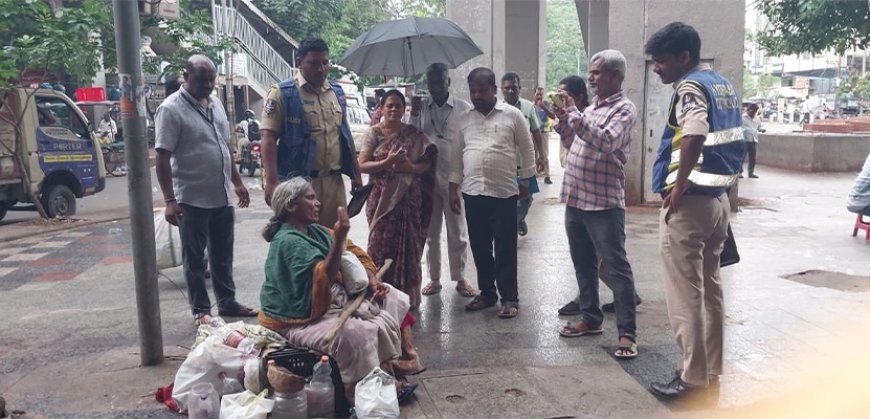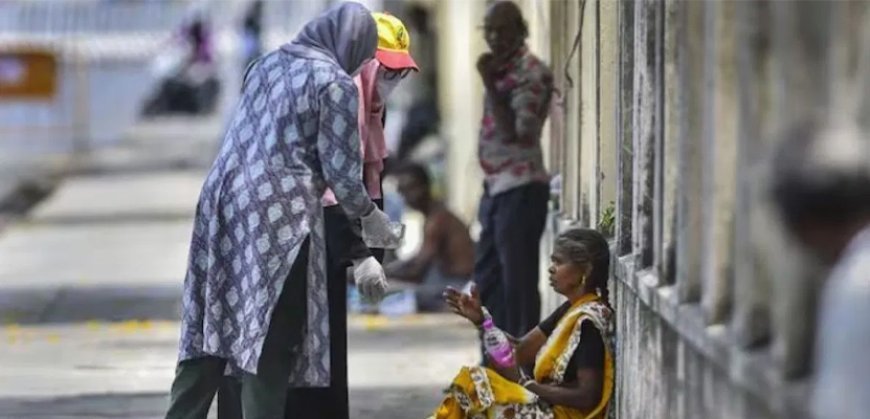GHMC Launches Beggar-Free Street Drive in Hyderabad
Hyderabad's streets are changing as GHMC relocates 221 beggars in a bold new move. What is behind the Beggar-Free Street mission?

In a bold and humane step toward transforming Hyderabad’s public spaces, the Greater Hyderabad Municipal Corporation (GHMC) has kicked off a city-wide initiative aimed at clearing major roads and junctions of street beggars, without stripping away their dignity.
Launched on June 26, the ‘Beggar-Free Street’ campaign is more than just a clean-up drive. It’s a focused rehabilitation effort. At the heart of it lies a deep social concern, moving beyond quick fixes and offering the forgotten citizens of the city a second chance. The initiative also ties into larger state government policies on urban development, where the emphasis is shifting from beautification alone to inclusive city management. By focusing on rehabilitation, GHMC is aligning the campaign with the Sustainable Development Goals (SDGs), especially those related to poverty reduction and human dignity.
Key Areas Under the Beggar-Free Initiative
From Basheerbagh to Begum Bazar, Nampally to Secretariat, GHMC officials, working closely with the Hyderabad City Police, have identified high-traffic areas where begging has become a routine sight. Special teams are now on the ground, conducting spot checks and gently relocating individuals found begging at traffic signals, temples, and footpaths. These locations were selected after a month-long survey by UCD staff and local NGOs, mapping out where the concentration of beggars was highest.
Each person is given a basic medical screening. Those with no families are moved into GHMC-run shelter homes. Others, after proper counselling, are reconnected with their families wherever possible. Screenings include checks for malnutrition, tuberculosis, and other communicable diseases to ensure public health safety. GHMC has also partnered with local hospitals and charitable organizations to provide treatment for those who need extended care.
Initial Relocation Figures
In just the first phase of the drive, 221 individuals have been relocated:
- 173 men
- 37 women
- 11 children
Of these, 19 have been moved into city shelter homes, while the rest have received counselling and were reunited with their families. Officials clarified that children are being linked to child protection services and enrolled into bridge schools run under the Sarva Shiksha Abhiyan program, ensuring they don’t fall back into street begging. Women identified during the relocation are being connected to self-help groups under the Mission for Elimination of Poverty in Municipal Areas (MEPMA) to help them regain financial independence.
But GHMC says this is just the beginning. Future phases are expected to cover more zones across Hyderabad, with plans to extend the program into areas like Kukatpally, LB Nagar, and Charminar, where traffic congestion and begging overlap significantly.
Purpose Behind the Campaign
The mission isn’t about removing people from sight. It’s about giving them a chance to step off the pavements and onto a path of care, shelter, and stability. GHMC’s Urban Community Development (UCD) wing is spearheading the effort, slowly but consistently, forming dedicated task forces to monitor hotspots and follow up on relocated individuals. Regular follow-up visits are scheduled to track progress, and a database is being created to ensure no individual slips back into street life without support. This database will also allow coordination between GHMC, NGOs, and state-run welfare programs like pension schemes and food security initiatives.
More than a visual change, the ‘Beggar-Free Street’ campaign is meant to trigger something deeper. It’s a shift in how Hyderabad treats its most vulnerable. City planners believe this initiative will also help reshape Hyderabad’s image as a modern metro ready for global investors and tourists, where urban compassion and infrastructure go hand in hand.
Empathy in Action on Hyderabad’s Streets
Cleaner junctions mean better traffic flow, fewer public complaints, and a more organized urban experience. But at its core, this is a social reintegration movement. One that reminds us that rehabilitation doesn’t always begin inside buildings. Sometimes, it starts right on the streets, with empathy, structure, and a clear plan. The collaboration with NGOs, religious institutions, and citizen volunteers adds credibility, showing that public support is as crucial as government machinery.

And for Hyderabad, this could mark the beginning of a kinder, better city. If the campaign succeeds, GHMC plans to present it as a model for replication in other major cities of Telangana and beyond, positioning Hyderabad as a leader in humane urban governance.
FAQs
Why is GHMC conducting the Beggar-Free Street initiative?
The aim is to decongest traffic junctions, reduce public inconvenience, and offer rehabilitation and shelter to the homeless and those begging on the streets.
Which areas are being targeted under Beggar-Free Street initiative?
The drive is currently focused on high-traffic areas like Basheerbagh, Secretariat, Nampally, Begum Bazar, and other key junctions under GHMC limits.
What happens to the beggars once they are relocated?
After medical checks, individuals are either shifted to GHMC-managed shelter homes or sent back to their families following counselling.
Is this a one-time campaign?
No, GHMC has confirmed it is a continuous effort. Special teams will regularly monitor and carry out relocation drives.
Who is responsible for managing this Beggar-Free Street initiative?
The Urban Community Development (UCD) wing of GHMC is leading the drive, in coordination with the Hyderabad City Police.

 Admin
Admin